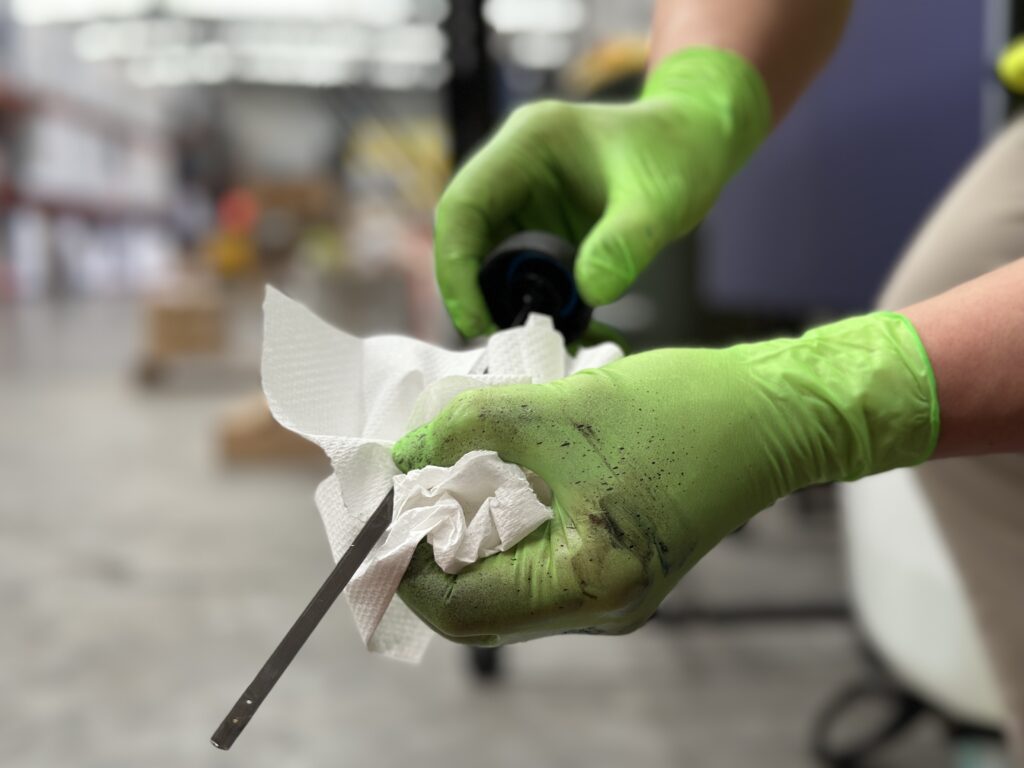
Coloured gloves are pretty, but they aren’t just for aesthetics. They have some pretty powerful benefits when it comes to workplace safety and efficiency!
Manufacturers introduced nitrile disposable gloves in the mid 90s, and made them blue to distinguish them from white latex and vinyl gloves.
You could easily see which gloves people with latex irritations should use and which gloves offered better chemical resistance.
In 2007, The Glove Company introduced the first ultra-tough black nitrile disposable glove in Australia and New Zealand. They were completely unique, with a much stronger formula, not just blue nitrile gloves made black.
So glove wearers had three options, easily differentiated by colour: white was latex and vinyl, blue was latex-free nitrile, and black was industrial-grade nitrile.
Today, disposable gloves are available in pretty much any shade and colour, regardless of material.
The most common and useful purpose is to be a part of a colour-coded system.
Some departments, applications, or processes should use different supplies like Chux and gloves. So, a different coloured glove is used for each section to prevent cross-contamination.
Another key benefit is concealing or highlighting contamination on the glove surface. Light coloured gloves allow the wearer to see hazards on the glove, while dark colours hide contaminants.
Sometimes, workplaces use coloured gloves to add fun, give employees choice, match scrubs and uniforms, or create contrast when double gloving.
Let’s get into the benefits of specific colours.
Blue is the most popular colour for disposable gloves, commonly used in medical and food settings.
First, no food is truly blue, so a blue glove is best when working with food. On the off chance that a blue glove breaks, it’s easy to find and remove immediately.
Now I know your mind went straight to blueberries, crush one in your hand, it’s more purple than blue. And yes, there is always blue food dye to consider but blue remains the best option nonetheless.
Blue is also the universal colour for health – Nurse scrubs, hair nets, and face masks are all commonly blue because it represents calmness, sensitivity, and trust. Also, the sharp contrast between the blue glove and skin makes it easy to detect any damage to the glove which could be detrimental if not detected.
Like we mentioned above, black nitrile gloves indicated a unique industrial grade formula. This formula used more nitrile to make the gloves thicker, stronger and provide better protection against chemicals and solvents.
Black gloves are the best at hiding contaminants like grease, ink, grime, and more. This helps alleviate concerns about wearing contaminated gloves, makes users & customers more comfortable and prevents overuse. They are popular in automotive, tattooist, and law enforcement industries.
The Glove Company introduced orange gloves as a hi-vis alternative to industrial-grade black nitrile gloves. Orange gloves make it easy to detect hazardous contaminants, prevent cross-contamination and keep your workplace sanitary.
The bright colour helps you see what you’re doing in low light and dark environments and makes it easier for others to see you.
Biodegradable disposable gloves are often green, however, it’s important to note that not all green gloves are biodegradable. If you are searching for a biodegradable glove, look for ASTM D5511 certification.
White gloves are the industry standard for cleanroom environments. They allow workers to see contaminants immediately, ensuring cleanrooms remain clean.
People often use white gloves when double gloving, pairing them with a coloured glove highlights imperfections immediately thanks to the stark contrast.
White gloves require less dye than other coloured gloves, this can help reduce the risk of a reaction on skin sensitive to dyes.
So, traditionally a glove’s colour told you the material and purpose, but today blue gloves can be latex, white gloves can be industrial grade, black gloves can be medical, and so on.
There are plenty of benefits to using coloured gloves in the workplace, so consider what colours best apply to your operations, or if there’s no need for a specific colour you can choose any!
Notifications